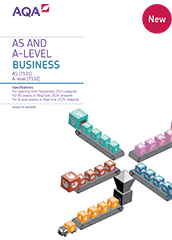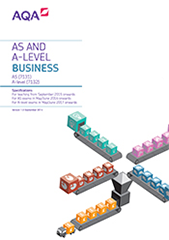3.6 Decision making to improve human resource performance
Students should consider the following throughout this section of the specification:
- how developments in technology are affecting decision making and activities in relation to human resources (eg changing the nature of work, the skills that are required and ways of working such as tele-working)
- ethical and environmental influences on human resources decisions
- market conditions (including the labour market) and competition
- how human resource decisions help improve the competitiveness of a business
- the interrelationship between human resource decisions and other functions.
Setting human resource objectives
Updated
We've made some changes to the subject content in the table below. These changes affect first AS exams in 2024 and A-level exams in 2025. To find out what's changed, read our summary of changes. You can also visit our updated specification.
Content |
Additional information |
|---|---|
The value of setting human resource objectives |
Human resource objectives include:
|
Internal and external influences on human resource objectives and decisions |
Influences on human resource objectives such as soft and hard Human Resource Management (HRM) approaches. |
Analysing human resource performance
Updated
We've made a change to the subject content in the table below. This change affects first AS exams in 2024 and A-level exams in 2025. To find out what's changed, read our summary of changes. You can also visit our updated specification.
Content |
Additional information |
|---|---|
Calculating and interpreting human resource data |
Students should be able to calculate and interpret:
|
The use of data for human resource decision making and planning |
Making human resource decisions: improving organisational design and managing the human resource flow
Updated
We've made some changes to the subject content in the table below. These changes affect first AS exams in 2024 and A-level exams in 2025. To find out what's changed, read our summary of changes. You can also visit our updated specification.
Content |
Additional information |
|---|---|
Influences on job design |
Job design to include Hackman and Oldham’s model. |
Influences on organisational design |
Decisions relating to organisational design include:
|
Influences on delegation, centralisation and decentralisation |
|
The value of changing job and organisational design |
|
How managing the human resource flow helps meet human resource objectives |
Human resource flow to include:
|
Making human resource decisions: improving motivation and engagement
Updated
We've made some changes to the subject content in the table below. These changes affect first AS exams in 2024 and A-level exams in 2025. To find out what's changed, read our summary of changes. You can also visit our updated specification.
Content |
Additional information |
|---|---|
The benefits of motivated and engaged employees |
Theories of motivation should include Taylor, Maslow and Herzberg. |
How to improve employee engagement and motivation |
Financial methods of motivation should include:
|
The value of theories of motivation |
|
The use of financial methods of motivation |
|
The use of non-financial methods of motivating employees |
|
Influences on the choice and assessment of the effectiveness of financial and non-financial reward systems |
Making human resource decisions: improving employer-employee relations
Content |
Additional information |
|---|---|
Influences on the extent and methods of employee involvement in decision making |
Employee representation methods to include trade unions and works councils. |
How to manage and improve employer-employee communications and relations |
|
Value of good employer-employee relations |

